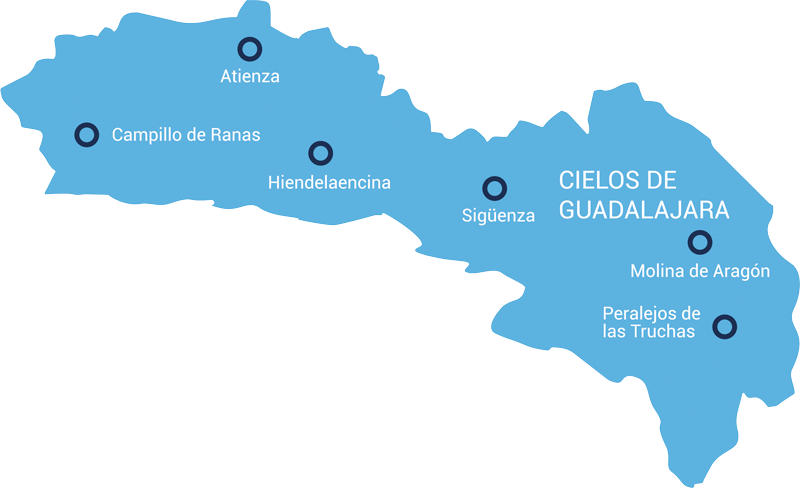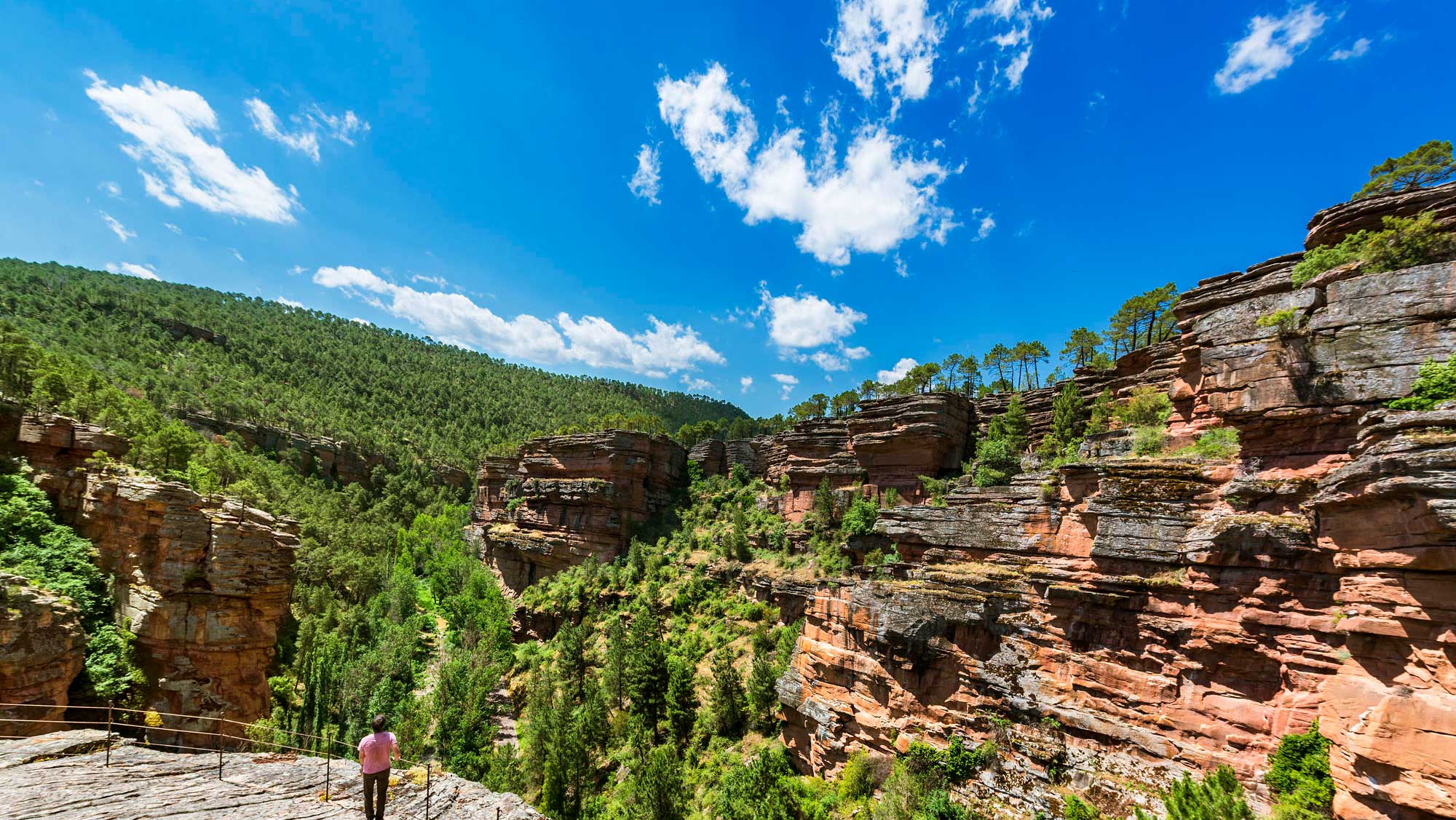Starlight Tourist Destination
Guadalajara Skies
The Reserve’s catchment area
The Guadalajara regions of the Sierra Norte and Molina-Alto Tajo, and a total of 161 towns, make up this Starlight Tourist Destination. Stunningly beautiful protected natural spaces guarantee the region’s natural wealth. Mountains, countryside, glacis with stones, highlands, barren areas, and forests make up a landscape that contains a rich variety of fauna and flora. Its rich cultural heritage also includes Paleolithic and Neolithic sites, from the Iron and Bronze Ages, remains from the Celtiberian, Roman, Visigothic and Islamic periods, as well as some of the most impressive historical-artistic centres in Spain.

This area’s protected natural resources are the Natural Parks of the Sierra Norte (Northern mountain range), the Barranco del Río Dulce (the Dulce River canyon) and the Sierra de Ayllón (Ayllón mountain range). These spaces represent 38.21% of the total surface area. The region comprises three clearly defined zones: Mountain ranges (from east to west), countryside and glacis with stones (to the south), moorlands and barren areas (to the northeast).
The mountain ranges span from the Pico del Lobo Massif (2,272 m) to Sierra Ministra (1,200 m), where the Central and the Iberian Mountains converge. To the north and inland, medium height mountain ranges (Pela, Bulejo, Miedes, Pila, Gorda, Concha, La Bodera); in the central region, the Ocejón range (the Fujiyama of Guadalajara, because it can be seen from any point) and the Altorey range, a magical place full of legends.
The importance of hunting resources in this region should be noted. The territory has many hunting species, including large and small game. Highlights include: roe deer, wild boar, hare, rabbit and quail.
The region has abundant architectural heritage, one of the main tourist attractions in the area, and the biggest draw in certain towns including Atienza, Jadraque and Sigüenza. The Communities Council chose to award the town council of Sigüenza the Prize for Best Tourist Destination 2020, and both the town council and regional and provincial administrations are working towards securing its declaration as a UNESCO World Heritage Site.
Nestled in the highlands and mountains of the “internal” branch of the Iberian system, the region is topographically characterised by its high altitude, 1,200 m on average, with a more rugged relief from the ravines created by the Tagus River and its tributaries as they wind through the valleys. The rest of the region is formed by a fairly uniform plateau, with only the Caldereros and Selas Mountain ranges crossing from northwest to southeast.
Approximately 70% of the region has some form of environmental protection, which reveals the area’s abundant environmental richness and ecological value. These include the Alto Tajo Natural Park and six areas that feature in the Natura 2000 Network programme.
Two other areas protected by regional legislation are also worth noting: the Sierra de Caldereros Natural Monument and the Prados Húmedos de Torremocha del Pinar Microreserve.
Unesco World Geopark. In 2014, the region was accepted into the European Geoparks Network, and in 2015 this programme came under the auspices of UNESCO. The first and only Geopark to be recognised in Castilla-La Mancha and the largest in Spain, extending over 4,300 square kilometres, and with 77 population centres.
This region’s highlights include its great geodiversity and the stunning landscape, over 650 million years old, which gives rise to incredible geological history through places such as the Tajo and Gallo River canyons, the Orea river of stone blocks, the dropstone and the deposit of graptolites at La Tejera; in Checa, the Sierra de Caldereros Natural Monument, the Mesa Valley and the Sierra de Aragoncillo fossil forest, and much, much more.
The municipality of Molina de Aragon is a historic site with tremendous value. As well as its imposing castle and the Tower of Aragon, the town has a Jewish quarter discovered during excavations in 1998.
Castles and military buildings are scattered around the region. Highlights include the Zafra Castle, Embid Castle, Santiuste, Villel de Mesa, Castilnuevo or the stronghold of Vega de Arias in Tierzo. Fine examples of rural Romanesque can also be found in hermitages such as the Virgen de la Carrasca in Castellar de la Muela, or Santa Catalina in Hinojosa. The multiple manor houses found in several local villages, traditional architecture, wash houses, forges, ovens or pairones (standing stone towers) are also of interest.
Abánades, Abeteta, Ablanque, Adobes, Alaminos, Albendiego, Alcolea de las Peñas, Alcolea del Pinar, Alcoroches, Algar de Mesa, Algora, Alustante, Angón, Anguita, Anquela del Ducado, Anquela del Pedregal, Arbancón, Armallones, Arroyo de las Fraguas, Atienza, Baides, Baños del Tajo, Bañuelos, Bujalaro, Bustares, Campillo de Dueñas, Campillo de Ranas, Campisábalos, Canredondo, Cantalojas, Castejón de Henares, Castellar de la Muela, Castilnuevo, Cendejas de En Medio, Cendejas de la Torre, Checa, Chequilla, Cincovillas, Ciruelos del Pinar, Cobeta, Cogolludo, Condemios de Abajo, Condemios de Arriba, Congostrina, Corduente, El Cardoso de la Sierra, El Ordial, El Pedregal, El Pobo de Dueñas, El Cardoso de la Sierra, El Recuenco, El Sotillo, Embid, Esplegares, Establés, Estriégana, Fuembellida, Fuentelsaz, Galve de Sorve, Gascueña de Bornova, Herrería, Hiendelaencina, Hijes, Hombrados, Huérmeces del Cerro, Huertahernando, Iniéstola, Jadraque, Jiruque, La Bodera, La Huerce, La Mierla, La Miñosa, La Olmeda de Jadraque, La Toba, La Yunta, Las Inviernas, Luzón, Luzaga Mandayona, Majaelrayo, Maranchón, Matillas, Mazarete, Membrillera, Megina, Medranda, Milmarcos, Miedes de Atienza, Mirabueno, Mochales,Monasterio, Molina de Aragón, Morenilla, Navas de Jadraque, Negredo, Ocentejo, Olmeda de Cobeta, Orea, Pálmaces de Jadraque, Pardos, Paredes de Sigüenza, Peñalén, Peralejos de las Truchas, Piqueras, Pinilla de Jadraque, Pinilla de Molina, Poveda de la Sierra, Prádenos de Atienza, Pradenos Redondos, Puebla de Valles, Rebollosa de jadraque, Retiendas, Riba de Saelices, Río del Gallo, Riofrío del Llano, Robledo de Corpes, Romanones de Atienza, Rueda de la Sierra, Sacecorbo, Saelices de la Sal, San Andrés del Congosto, Santiúste, Saúca, Selas, Semillas, Setiles, Sienes, Sigüenza, Somolinos, Sotodosos, Tamajón, Taravilla, Tartanedo, Terzaga, Tierzo, Tortuero, Tordellego, Tordelrábano, Tordesilos, Torrecuadrada de Molina, Torrecuadradilla, Torremocha, Torremocha del Campo, Torrenocha del Pinar, Torremochuela, Torrubia, Tortuera, Traid, Ujados, Valdecubo, Valdepeñas de la Sierra, Valhermoso, Valtablado del Río, Valverde de los Arroyos, Viana de Jadraque, Villanueva de Alcorón, Villares de Jadraque, Villaseca de Henares, Villel de Mesa, Zaorejas y Zarzuela de Jadraque.
Astrocalendar
Jornadas Astronómicas de La Manchuela
Del 6 al 8 de octubre
Jornadas Astronómicas
I Jornadas Astronómicas de la Comarca de La Manchuela. Actividades para todos los públicos.
Verano Astronómico. Sierra del Segura
Julio-agosto 2023
Observaciones Astronómicas
Ofrecemos una serie de actividades de observación astronómica de una manera guiada y didáctica, en pleno contacto con la naturaleza y en el momento y lugar óptimos para ello: las noches de verano bajo la Sierra del Segura.
Talleres y observación astronómica con telescopios y prismáticos
Verano Astronómico. Sierra de Alcaraz y Campo de Montiel
Julio-agosto 2023
Observaciones Astronómicas
Ofrecemos una serie de actividades de observación astronómica de una manera guiada y didáctica, en pleno contacto con la naturaleza y en el momento y lugar óptimos para ello: las noches de verano bajo la Sierra de Alcaraz y Campo de Montiel.
Verano Astronómico. Valle de Alcudia y Sierra Madrona
Julio-agosto 2023
Observaciones Astronómicas
Ofrecemos una serie de actividades de observación astronómica de una manera guiada y didáctica, en pleno contacto con la naturaleza y en el momento y lugar óptimos para ello: las noches de verano bajo el Valle de Alcudia y Sierra Madrona.
Verano Astronómico. Cielos de Guadalajara
Julio-agosto 2023
Observaciones Astronómicas
Ofrecemos una serie de actividades de observación astronómica de una manera guiada y didáctica, en pleno contacto con la naturaleza y en el momento y lugar óptimos para ello: las noches de verano bajo los Cielos de Guadalajara.
Verano Astronómico. Cabañeros
Julio-agosto 2023
Observaciones Astronómicas
Ofrecemos una serie de actividades de observación astronómica de una manera guiada y didáctica, en pleno contacto con la naturaleza y en el momento y lugar óptimos para ello: las noches de verano bajo el destino Cabañeros.
Verano Astronómico. Serranía de Cuenca
4 de julio de 2023
Observaciones Astronómicas
Ofrecemos una serie de actividades de observación astronómica de una manera guiada y didáctica, en pleno contacto con la naturaleza y en el momento y lugar óptimos para ello: las noches de verano bajo la Serranía de Cuenca.
Astronomical Summer. Sierra del Segura
July-August 2022
Astronomical Observations
A series of guided, educational astronomical observation activities are available, at one with nature (the best place for it) and at the best time of the year: summer nights in the Sierra del Segura.
Astronomical Summer. Serrania de Cuenca Astronomical Park
June-September 2022
Astronomical Observations
A series of guided, educational astronomical observation activities are available, at one with nature (the best place for it) and at the best time of the year: summer nights in the Serranía de Cuenca (Cuenca Highlands).
Guadalajara Skies
June-September 2022
Astronomical Observations
A series of guided, educational astronomical observation activities are available, at one with nature (the best place for it) and at the best time of the year: summer nights under the Guadalajara Skies.
Alcudia Valley and the Sierra Madrona (Madrona Mountains) Natural Park
July-August 2022
Astronomical Observations
A series of guided, educational astronomical observation activities are available, at one with nature (the best place for it) and at the best time of the year: summer nights in the Alcudia Valley and the Sierra Madrona Natural Park.
Elche de la Sierra - Teatro Aguado (Aguado Theatre)
From 9 to 14 May 2022
Starlight Astronomical Monitors Training Days In The Sierra Del Segura, Sierra De Alcaraz, Campo De Montiel, And La Manchuela Regions
Week of 9 to 14 May 2022.
Elche de la Sierra, Albacete.
Free
Number of hours: 60
Places available: 45
Schedule: 9 am to 2 pm, 4 pm to 7 pm, 8:30 pm to midnight (practice)
Calling all tourism sector professionals in Albacete province, particularly in the Sierra del Segura, Sierra de Alcaraz and Campos de Montiel and La Manchuela, with an interest in becoming “Starlight Astronomical Monitors”, and leading groups seeking to enrich their knowledge of the universe and nature, through sharing, with the naked eye, and simple observation instruments.
Santa María del Conde Assembly Hall, Plaza de España 23, Molina de Aragón
28 Feburary to 5 March 2022
Starlight Astronomical Monitors Training Days
Schedule: 10 am to 2:30 pm, 5 pm to 9:30 pm, 10:30 pm to 1:30 am (practice).
Places available: 45
Number of hours: 60
Student profile and requirements: Entrepreneurs interested in leading groups in natural environments, to rural accommodation or establishments of another kind; tour guides, spokespersons or other professionals involved in communicating scientific, historical, and cultural values in the astronomical sky to groups through night and daytime observation, astrophotography, and the fight against light pollution.
Alcudia Valley and the Sierra Madrona (Madrona Mountains) Natural Park
From 8 to 13 November 2021
Starlight Astronomical Monitors Training Days
Puertollano Cultural Centre. Calle Numancia, 55
Schedule
- Monday to Thursday from 9 am to 5 pm.
- Saturday, 13 November: from 9 am to 2:30 pm.
Astronomical observation practice at night from 9:30 pm to 1 am (approx.) from Monday to Friday. *
Places available: 45
Number of hours: 60
Student profile: tourism sector employees interested in undertaking professional astro-tourism activities in the Alcudia Valley and Sierra Madrona Natural Park Starlight Destination.
* For health and safety reasons, registered individuals must provide their own means of transportation from the venue where workshops are held to the astronomical observation points where practical sessions are conducted.
Serrania de Cuenca Astronomical Park
July-September 2021
Stargazing In The Serranía De Cuenca (Cuenca Mountain Range)
A series of guided, educational astronomical observation activities are available, at one with nature (the best place for it) and at the best time of the year: summer nights in the Serranía de Cuenca (Cuenca Highlands).
Alcudia Valley and the Sierra Madrona (Madrona Mountains) National Park
July- September 2021
Stargazing In The Alcudia Valley And The Sierra Madrona (Madrona Mountains) National Park
A series of guided, educational astronomical observation activities are available, at one with nature (the best place for it) and at the best time of the year: summer nights in the Serranía de Cuenca (Cuenca Highlands).
Astronomical Summer. Serrania de Cuenca Astronomical Park
Summer 2020/2021
Astronomical Observations
A series of guided, educational astronomical observation activities are available, at one with nature (the best place for it) and at the best time of the year: summer nights in the Serranía de Cuenca (Cuenca Highlands).
Astronomical Summer. Alcudia Valley and the Sierra Madrona (Madrona Mountains) Natural Park
Summer 2020/2021
Astronomical Observations
A series of guided, educational astronomical observation activities are available, at one with nature (the best place for it) and at the best time of the year: summer in the Alcudia Valley and the Sierra Madrona Natural Park (Ciudad Real).
Astronomical Summer. Serrania de Cuenca Astronomical Park
Summer 2018/2019
Astronomical Observations and Mobile Planetarium
A series of guided, educational observation activities are available for beginners in astronomy, at one with nature (the best place for it) and at the best time of the year: summer nights in the Serranía de Cuenca (Cuenca Highlands).
Museum of Sciences (Plaza de la Merced)
18-19-20 and 25-26-27 October 2018
Starlight Astronomical Monitors
The course aims to make known, in practical fashion, the professional opportunities that astrotourism offers, the unique nature of the companies involved in this niche, how to develop this innovative product and the best way to promote it.
Starlight Tourist Destinations 2023. Castilla-La Mancha Tourism









